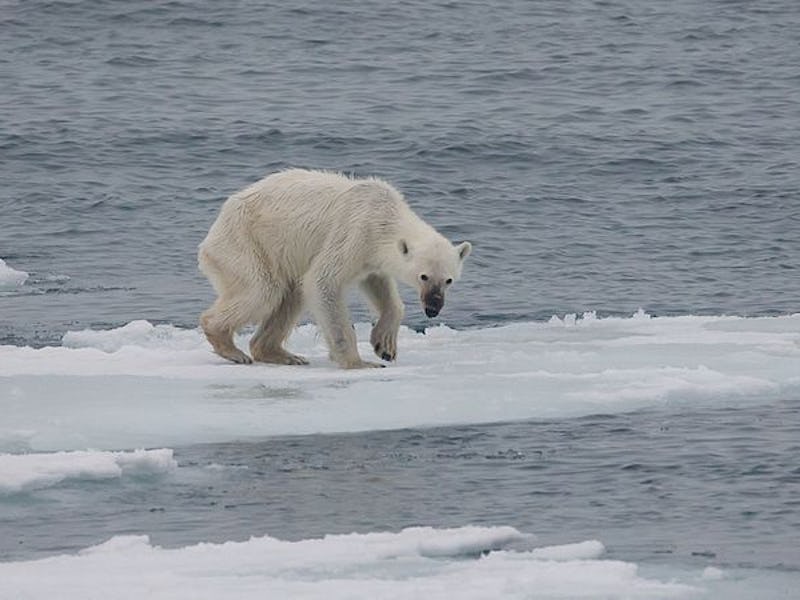Seal Study Reveals Why Polar Bears Are All so Emaciated Now
It's not just the beloved bears that are in trouble.

In December 2017, video footage of an extremely emaciated polar bear went viral. Louder voices claimed the bear was a victim of climate change, while some experts questioned whether his tragic state was actually the result of illness. While we still don’t know what drove the dying bear to that state, the video’s release reignited a conversation about conservation: Polar bear populations have declined by 40 percent over the past decade, and we’re now at serious risk of losing them entirely.
The declining populations have largely been linked to changing sea ice conditions, but until now, scientists have been unable to identify exactly what mechanisms are causing stressful conditions and higher mortality rates in polar bears.
In a paper published Thursday in Science, a team led by University of Santa Cruz scientists offer a new theory: When it comes down to it, polar bears have high energy demands, and historically they have met those demands by eating fat-rich, calorie-dense seals. But with sea ice decreasing across the Arctic at a rate of 14 percent per decade, the number of seals available has dropped dramatically, and this has taken its toll on polar bears.
Female polar bears without cubs were monitored as they hunted for prey.
In the study, the researchers observed female polar bears living near the Beaufort Sea during the spring in 2014, 2015, and 2016. Over periods of eight to 11 days, the scientists measured the bears’ behavior, hunting success, and metabolic rates, returning annually to repeat the process. Their analysis clarified a crucial characteristic about the bears: Their field metabolic rates — the measure of how quickly they spent their energy — were actually 50 percent higher than previous studies had predicted. Five of the nine bears lost a notable amount of body mass, suggesting that they weren’t meeting their energy demands with enough prey.
Polar bears need a huge amount of energy to thrive. For these bears, simply walking expends more energy than it does for similarly sized mammals. They occupy expansive home ranges and swim for extended distances to hunt for marine prey, and the effect climate change has had on the Arctic sea ice has forced polar bears to search even further than usual for seals.
An adult female polar bear wearing a GPS satellite video-camera collar used for this study.
“Because metabolism determines the rate at which organisms require energy from their environment, measures of polar bear metabolic rates provide an important metric for linking declines in Arctic sea ice to polar bear survival,” the researchers write.
“Changes in energy balance resulting from increased energy expenditure or reduction in foraging opportunities could lead to declines in body condition, survival, and reproductive success.”
This is a polar bear still-hunting at a seal hole on the sea ice of the southern Beaufort Sea.
In short, the bears aren’t just suffering from a lack of food; they also need a lot more food to survive than we first thought. The effect of low seal populations was especially pronounced because bears typically catch most of the prey they need to stay alive throughout the year between April and July. This study was conducted in April, and by then more than half of the bears had lost the body mass crucial to their survival.
Arctic warming creates “an issue of how much fat they can put on before the ice starts to break up, and then how much energy are they having to expend,” said study co-author, University of Santa Cruz Ph.D. candidate, and United States Geological Survey wildlife biologist A.M. Pagano in a statement on Thursday.